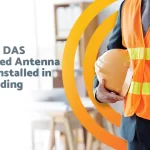Lens Antennas Provide More Cellular Capacity to Venues at a Lower Cost
Indeed, the mobile service industry will always encounter an increase in bandwidth demand. This view is especially true at public venues such as fields, arenas, and stadiums. Sports and show fans are the heaviest users of wireless services, with streaming and social media browsing, which creates a dilemma for venue owners and operators and their connectivity services partners. They must comprehend how to meet the ever-growing demand for connectivity and support as mobile phones and their apps and services remain to increase in power and data demands. In addition to the existing challenge to provide enough bandwidth for instant messaging and live video communications, there’s the approach of live mobile gaming inside arenas and event venues, which will further drive demand for lower latency.
Venues of all sizes and shapes are already trying various techniques to address the dilemma, but options are limited with existing technologies. For example, adding more antennas to the cellular network is the first effort. Still, even that strategy runs out of room eventually due to signal interruption and venue real-estate concerns.
Some venues have attempted to deploy cellular antennas in under-seat or handrail enclosures. Although this approach can improve the density of the network coverage, the strategy can also introduce new RF challenges with seat construction materials such as metal mounting rails that can add to the cost of deployment. In addition, under-seat deployments usually require concrete core drills, and extra behind-the-scenes conduit runs that quickly run up the price tag.
Thankfully, new technology and solutions are available. The novel method could dramatically increase venue cellular coverage and capacity at a lower cost and better aesthetics than traditional techniques. In addition, by using lens antennas mounted in ceiling or roof structures, venues obtain the advantage of each device’s multi-radio infrastructure to implement multiple direct line-of-sight beams that can be aimed precisely at specific seating sections. Since each lens antenna can adequately replace various other single-beam antennas, high cost and operational savings are realized by having fewer active components while eliminating the interference issues caused when user devices can “see” multiple radios inside a venue.
Outstanding Performance with a Distinct Shape
Lens antennas are mainly in the shape of a large ball with diameters ranging from 1 to 6 feet. Over the preceding few years, they have been used in several deployments, such as temporary installations at events. In addition, some professional sports venues have also made lens antennas a vital part of their in-venue cellular clarification, with more deployments already in progress.
Based on a Luneberg Lens theory from the 1940s, the lens antennas’ multiple-beam advantages come from the distinct shape of the lens that can adjust radio frequency from any direction. In addition, because the lens is symmetrical, multiple beams can come from a single lens. In fact, with current materials and technology, a particular lens antenna can build up to 48 distinct, precise beams each that give better broadband capacity than an array antenna or traditional antenna.
Lens antennas can also correlate to consumer devices much farther than regular in-building antennas, enabling the lens antennas to be extended in the ceiling, catwalk, or roof structures instead of public areas or seating bowls. Unlike traditional cellular deployments, multiple antennas require advanced testing and tuning to limit interference between radios. In addition, lens antennas can be adjusted simply by laser pointers as their line-of-sight broadcast directions cannot be “heard” by devices inside the narrow coverage beams.
Hence there are up to 48 radios possible inside each lens antenna; venues can increase coverage with less cable and power runs to each location. Additional accommodation can easily be added by adding more lens antennas, which can be placed closely unitedly since the directional focus of the beams doesn’t interfere between devices. Lens antenna deployments can also operate in hybrid situations and an existing DAS infrastructure.
Lens antennas deliver another excellent effect in keeping the equipment out of the view of the venue guests. Additionally, since the antennas can be painted in any color, they are also easily concealed to blend in with the background of the area installation.
Easier deployment, better performance, lower price
While no crystal ball can accurately predict exactly what venues will be needed for cellular and wireless connectivity requirements, the simple idea that demand will continue to increase should inform future planning for IT teams of all stadiums and arenas. And there will always be the need to balance costs with desired performance and acceptable levels of coverage. Thus, any venue in the process of evaluating changes or improvements to its wireless ecosystem would be wise to consider the lens-antenna advantage of improved performance in a more straightforward deployment method at a lower overall price.





